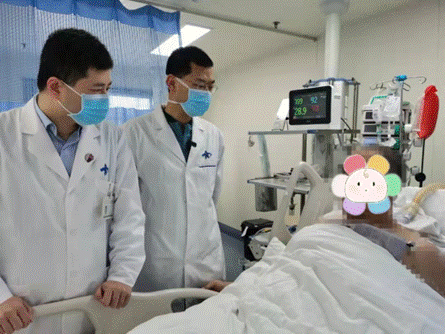On October 16, 2021, Department of Cardiovascular Surgery, Department of Thoracic Surgery, Department of Plastic Surgery, Department of Anesthesiologyand Department of Ultrasound of the First Affiliated Hospital of Xi an Jiaotong University (XJTU) collaborated to successfully perform "aortic valve replacement+ repair of the right ventricular diverticulum+ total sternal reconstruction with Peek materials and 3D printing technology" for 1 patient diagnosed with congenital valvular heart disease complicated with congenital sternal fissure. According to literature review, surgical regimen of this case has not been reported at home and abroad.
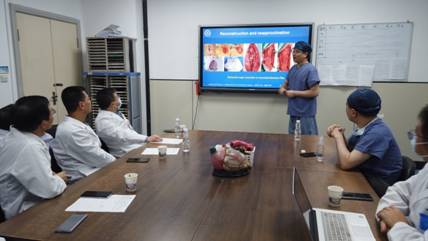
A 49-year-old patient, surnamed Wang, was diagnosed with congenital sternal fissure, absence of sternum 7/8, chest collapse, congenital bicuspid aortic valve malformation complicated with aortic insufficiency. Prior to admission to our hospital, he began to suffer from chest tightness, discomfort and shortness of breath with unknown causes for 6 months. Comprehensive examination indicated that the residual left and right sternum were partially connected with subcutaneous tissues through the middle chest skin. The patient was diagnosed with congenital sternal fissure, valvular heart disease, congenital bicuspid aortic valve malformation, aortic insufficiency, ascending aorta dilatation, right ventricular diverticulum and pulmonary hypertension.
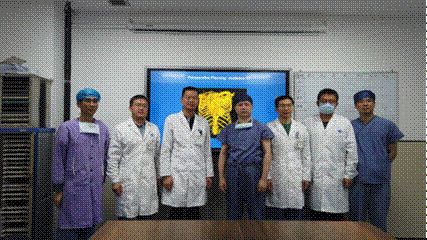
Relying on the multidisciplinary team (MDT) platform, Professor Yan Yang from Department of Cardiovascular Surgery, Professor Zhang Guangjian from Department of Thoracic Surgery, Professor Shu Maoguo of from Department of Plastic and Maxillofacial Surgery, Professor Wang Qiang from Department of Anesthesiology, Professor Li Guoliang from Department of Cardiovascular Medicine, Department of Ultrasound and other well-known experts from multiple disciplines conducted two rounds of consultations for disease conditions and treatment plans. According to the imaging findings, the team led by Professor Zhang Guangjian spent a week tailoring a 1:1 sternum "armor" for the patient with Peek materials and 3D printing technology.
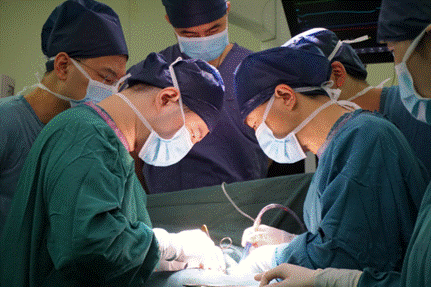
Shu Maoguo, Director of Department of Plastic and Maxillofacial Surgery, designed three skin flap transplantation regimens after sternal reconstruction. After comprehensive and in-depth evaluation and discussion by MDT experts, the treatment regimen of "heart valve replacement and sternal reconstruction with Peek material and 3D printing technology" was determined.
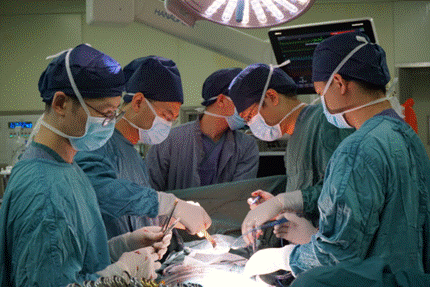
At 7:30 on October 16, 2021, the patient was transferred to Operation Room. The cardiovascular surgery team successfully completed aortic valve replacement + repair of the right ventricular diverticulum under cardiopulmonary bypass in only 60 min. Ultrasound examination immediately after surgery showed that the artificial valve properly functioned, the pressure difference across the valve was almost zero, and no aortic regurgitation was observed. After repair, the structure of the right ventricle was restored normal due to long-term absence of sternum.
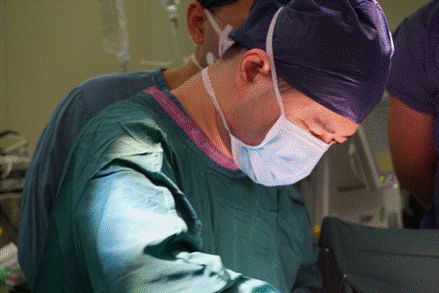
Subsequently, Professor Zhang Guangjian's team from Department of Thoracic Surgery rapidly evaluated and compared the actual space of sternum, repaired the absence of sternum by using the fully-prepared artificial sternum, which perfectly restored the integrity of chest and completed the functional reconstruction of bony chest.
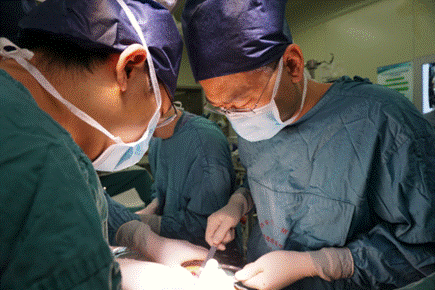
Finally, the team created the pectoralis major myocutaneous free flap, repaired the heart, treated the absence of sternum and completed incisional suture in a quick and organized manner, which simultaneously resolved three issues. The operation lasted for 4 h. Postoperatively, the patient was transferred to ICU of Department of Cardiovascular Surgery for further treatment. At postoperative 3 d, he was free from the ventilator and transferred to general ward for rehabilitation therapy.
